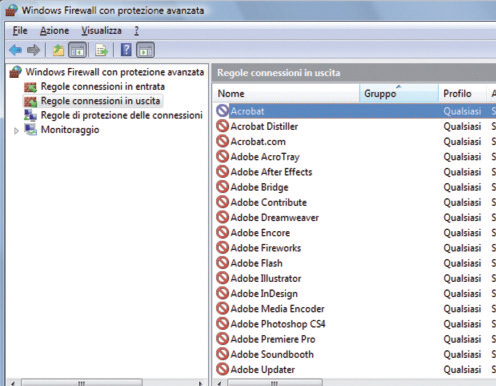
Creare Un Keygen Software
On PCs, this usually involves pressing a button such as Esc or F12 immediately after you turn on your computer, while on Macs, you should hold the Option key. Enter the domain you'd like to generate keys for, for example dkimcore.org and hit the button. Security notes. This online wizard is fine for generating keys for.
Generating Keys for Encryption and Decryption • • 3 minutes to read • Contributors • • • • • • In this article Creating and managing keys is an important part of the cryptographic process. Symmetric algorithms require the creation of a key and an initialization vector (IV). The key must be kept secret from anyone who should not decrypt your data.
The IV does not have to be secret, but should be changed for each session. Asymmetric algorithms require the creation of a public key and a private key. The public key can be made public to anyone, while the private key must known only by the party who will decrypt the data encrypted with the public key.
This section describes how to generate and manage keys for both symmetric and asymmetric algorithms. Symmetric Keys The symmetric encryption classes supplied by the.NET Framework require a key and a new initialization vector (IV) to encrypt and decrypt data. Whenever you create a new instance of one of the managed symmetric cryptographic classes using the default constructor, a new key and IV are automatically created. Anyone that you allow to decrypt your data must possess the same key and IV and use the same algorithm. Generally, a new key and IV should be created for every session, and neither the key nor IV should be stored for use in a later session. To communicate a symmetric key and IV to a remote party, you would usually encrypt the symmetric key by using asymmetric encryption. Sending the key across an insecure network without encrypting it is unsafe, because anyone who intercepts the key and IV can then decrypt your data.
For more information about exchanging data by using encryption, see. The following example shows the creation of a new instance of the class that implements the TripleDES algorithm. Dim tdes As TripleDESCryptoServiceProvider = new TripleDESCryptoServiceProvider() TripleDESCryptoServiceProvider tdes = new TripleDESCryptoServiceProvider(); When the previous code is executed, a new key and IV are generated and placed in the Key and IV properties, respectively.
Contoh soal tes toefl dan pembahasan pdf to word. Berikut disampaikan beragam soal TOEFL structure dan. Merupakan hal yang sangat penting dalam pembahasan TOEFL. Calon peserta tes TOEFL, bagian soal TOEFL. Contoh Soal Tes Toefl PBT Online Terbaru Gratis Pembahasannya (Paper Based Test) Kisi-kisi kumpulan soal Online free tanpa download jawaban benar (pembahasan soal. Misalnya, Anda tidak mungkin bisa menguasai soal-soal structure jika Anda baru mulai belajar pada hari Sabtu sementara Anda akan mengikuti tes TOEFL pada hari Senin. Sebagai tambahan, komponen utama dalam tata Bahasa Inggris adalah adanya s ubject dan verb.
Sometimes you might need to generate multiple keys. In this situation, you can create a new instance of a class that implements a symmetric algorithm and then create a new key and IV by calling the GenerateKey and GenerateIV methods. The following code example illustrates how to create new keys and IVs after a new instance of the symmetric cryptographic class has been made.

Dim tdes As TripleDESCryptoServiceProvider = new TripleDESCryptoServiceProvider() tdes.GenerateIV() tdes.GenerateKey() TripleDESCryptoServiceProvider tdes = new TripleDESCryptoServiceProvider(); tdes.GenerateIV(); tdes.GenerateKey(); When the previous code is executed, a key and IV are generated when the new instance of TripleDESCryptoServiceProvider is made. Another key and IV are created when the GenerateKey and GenerateIV methods are called. Asymmetric Keys The.NET Framework provides the and classes for asymmetric encryption. These classes create a public/private key pair when you use the default constructor to create a new instance. Asymmetric keys can be either stored for use in multiple sessions or generated for one session only.
While the public key can be made generally available, the private key should be closely guarded. A public/private key pair is generated whenever a new instance of an asymmetric algorithm class is created. After a new instance of the class is created, the key information can be extracted using one of two methods: • The method, which returns an XML representation of the key information. • The method, which returns an structure that holds the key information. Both methods accept a Boolean value that indicates whether to return only the public key information or to return both the public-key and the private-key information. An RSACryptoServiceProvider class can be initialized to the value of an RSAParameters structure by using the method.
Asymmetric private keys should never be stored verbatim or in plain text on the local computer. If you need to store a private key, you should use a key container. For more on how to store a private key in a key container, see. The following code example creates a new instance of the RSACryptoServiceProvider class, creating a public/private key pair, and saves the public key information to an RSAParameters structure. 'Generate a public/private key pair.
Dim rsa as RSACryptoServiceProvider = new RSACryptoServiceProvider() 'Save the public key information to an RSAParameters structure. Dim rsaKeyInfo As RSAParameters = rsa.ExportParameters(false) //Generate a public/private key pair. RSACryptoServiceProvider rsa = new RSACryptoServiceProvider(); //Save the public key information to an RSAParameters structure. RSAParameters rsaKeyInfo = rsa.ExportParameters(false); See also • • • • Feedback.